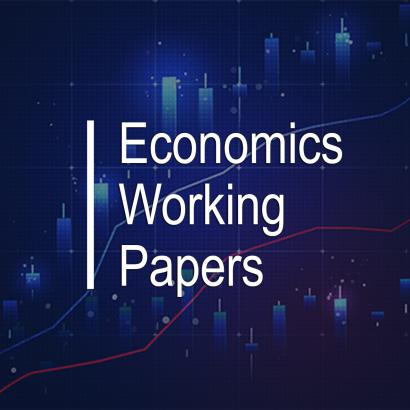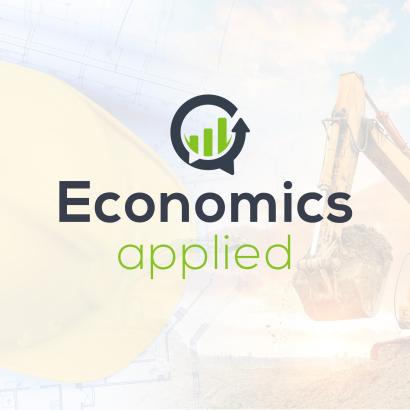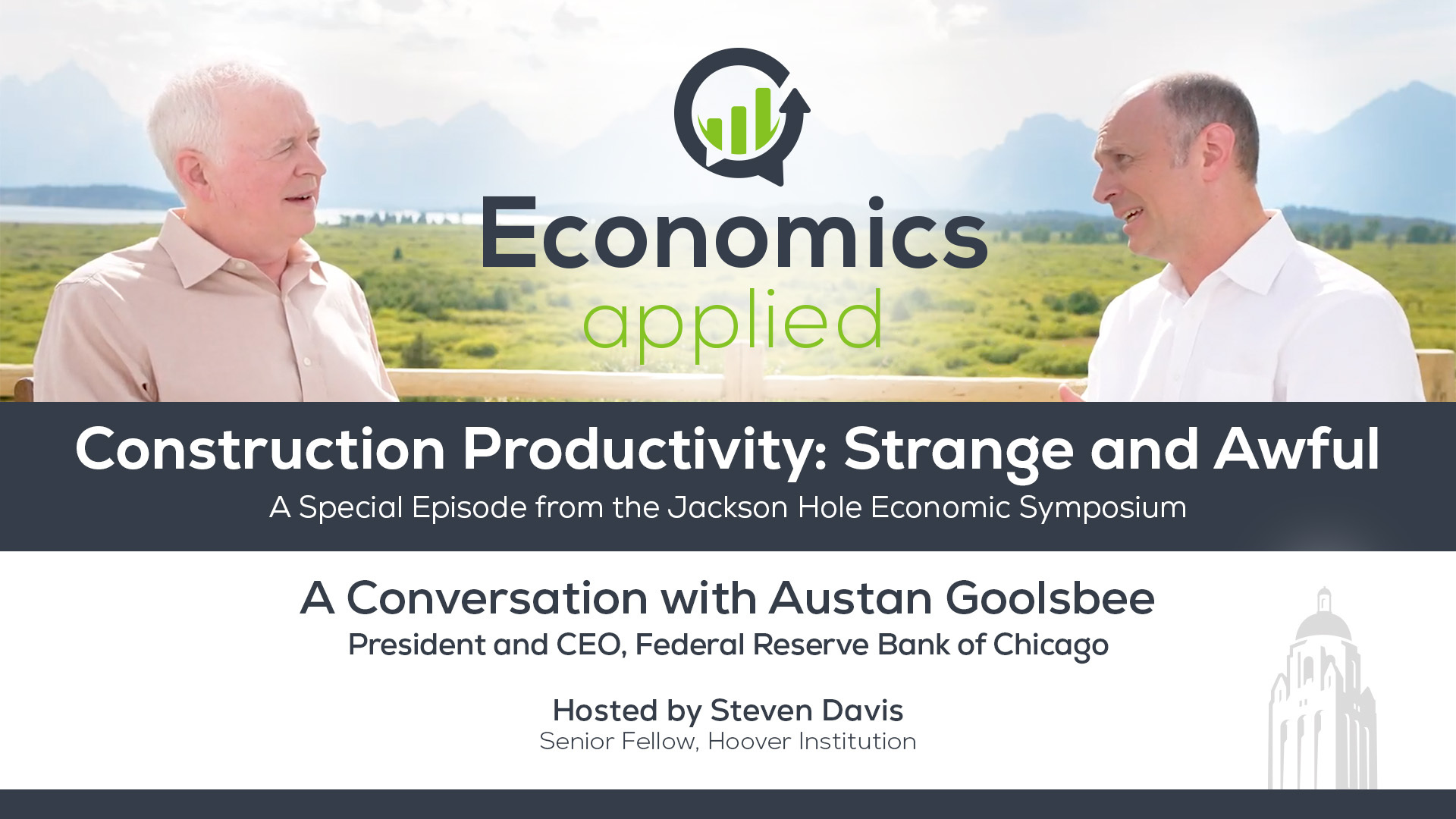- Regulation & Property Rights
- Innovation
- US Labor Market
- Answering Challenges to Advanced Economies
- Understanding the Effects of Technology on Economics and Governance
Austan Goolsbee joins Steven Davis to consider “The Strange and Awful Path of Productivity in the U.S. Construction Sector.” Strange because construction productivity has stagnated for decades. Awful because it makes homes less affordable for American families. They probe the issue, drawing on Austan’s recent research with Chicago Booth Professor Chad Syverson.
- Welcome to a special edition of Economics, Applied. I'm here with Austan Goolsbee, president of the Federal Reserve Bank of Chicago, and a member of the FOMC, which sets us monetary policy. Austan, you know, it's great to see you and thanks for joining, but you, you could be out there hiking the mountains watching bison searching for bears. I have been. You have been. Okay, good. I mean, I was worried about you. You know,
- I, I drove here and I, so I probably came the longest distance of anybody we're Dr. Driving my son out. He's gonna start working in Washington. Okay, great. So we toured of a couple of national parks, and I got my 50th state, North Dakota. All right, well, good for you. Okay. So I'm glad you're not all work in no play
- In your job. So I, yeah,
- Steve, you're just making peace. Steve and I have been, we're colleagues for 25 plus years, so I got a lot of dirt on him, but he's got even more on me. Yeah. So we're not,
- I forgot to say that, you know, it's not, you're not just the Chicago Fed President FOMC member, but most importantly former colleagues, this Chicago booth. And we're gonna, we're gonna touch on Chicago Booth again because I wanted to ask you about, and talk to you about a paper you wrote with our friend in Chicago, booth colleague Chad Verson, and it has the arresting title, I'll get it right here. The Strange and Awful Path of Productivity in the US construction sector starts out like a science fiction short story.
- Yeah. And it ends in a horror film.
- Okay. So, so tell me what, what's so strange and awful about construction productivity
- In qs? Well, look, what's strange and awful about productivity in construction, if you're used to thinking about manufacturing or you're used to thinking about technology, is it doesn't get any better. At the most, it's completely flat for 40 years, and by most measures it's negative. Literally 40 years productivity growth in construction going down.
- So booming cons, productivity, growth in manufacturing, for example. Yeah.
- So for decades, pan agriculture, absolutely. But compared to the rest of the economy, it's, that's, it's both strange and awful. And so that's why we, that's why we said that.
- Is it, is it also strange compared to other countries?
- It's harder for us to say that in this paper we tried a, a lot of the discussion among analysts has been, well, maybe it's just a measurement problem. Right. Maybe if we measure the price deflators better in construction, this anomaly would go away. And we tried to narrow it down to just single family homes, just different types of construction. You, you have these definitional problems elsewhere in the world. But my impression from McKinsey reports and things like that are that construction productivity has lagged throughout the world. That it's not just the US forces
- Happen. Okay. But the, but correct me if I'm wrong, there is, there is work by Jim Poterba among others that the US construction sector more broadly, at least for infrastructure construction, is extraordinarily expensive in the US to build things
- Compared to Yeah, I'm sure that's true compared to other, you wanna take one mile of subway, you want to do, you know, pave one mile of road infrastructure projects are astoundingly
- Expensive in these use. Okay. So to the extent that
- They, it might contribute to that. Yes. You know, it might be productivity, the, the lagging productivity growth in the sector may be contributing to that. That's less, as we got farther and farther into it, is tr try to look just at single family home building. It's, it would, wouldn't really
- Explain. And you're, I, I presume when, when you, when you drill down to single family homes, you're controlling for square footage, you're trying to control we other quality attributes of the
- House we, we would try to do. And so even when you do all that, it's still at best, like, like I say, the best you could say for it is it's basically flat.
- Okay. - It's probably negative over a pretty long period.
- Okay. That's, yeah, that's pretty depressing. And so, well, that begs the question of why, but before I ask you the why question, just maybe tell us why this is important. You know, why is this important? Why, why do we care about this?
- A couple of reasons. The first is, construction's not an insignificant fraction of the economy. It's a decent sized industry and it tends to be pretty cyclical and it tends to be pretty interest rate sensitive. So now in my new world of central banking, that's one of the tips of the spear of the business cycle. And if you're getting productivity growth going down in, in that sector, it's gonna drag down productivity overall. It is gonna drag down growth. And you, you gotta, you gotta at least be thinking about those. And then the second is, there's all of this effort as you know about thinking through the cost of housing. Right. And I'll just summarize it by over the last 20 years, it's not this thing that, it feels like housing is very expensive. That's not a brand new phenomenon. If you compare, if CPI inflation of goods that you buy at Target to CPI inflation of housing, that's been relative price going up for housing of four to 5% a year, compounding for 20 years.
- Okay.
- So young people today saying, well, my dad had we, we had only one salary, he didn't go to college and he was able to afford a big house, and I, now I can't even buy a condo. Right? They're not wrong. Kind of compared to Costco. The amount of effort that the economics profession and especially the researchers have dedicated to that. And the a as compared to, well, what if there's a productivity side explanation or
- To monetary policy?
- Or the monetary policy.
- Yeah.
- I, I would just encourage everybody to,
- Okay, so this is an understudied
- I think it's relatively understood.
- I think that's right. I think that's right. But let me just to summarize, you said two things and then I want to ask you a related question. So one reason this is a concern for the broader society is just, it's just a drag on the overall level of productivity growth in the United States, and that means slower growth on the standard of living and so on. Okay. Yes. Now, the second thing is, is it, is it the case that if you look at people in the bottom half or the bottom third of the income or the earnings distribution, that they tend to spend more on housing. So it's, it's kind of a, there's a distributional element of it as well? Or is that not the case?
- Maybe? I'm not sure. You, you probably know more than I do. Yeah. It, it gets into this distinctions about renters for sure.
- Well, yes,
- Renting is much more, I guess, common, but then you're getting into multi-family construction and stuff like
- That. Maybe a better way to pose the question as well. Yeah. There's a generational, a aspect you already
- Oh, for sure alluded to it earlier for generational young people. There are people arguing that if you are concerned about the fertility crisis in advanced countries, that a major determinant of the slowing fertility is people would like to buy a bigger house and have some more space. Right. And a housing too expensive, they don't have kids.
- Right. Okay. So yeah. I, I can sympathize with that from personal experience at points in my life. So, okay, so we got a problem. Yeah. It's a, it's a non-trivial problem. You've made that case. So now let's get to the question of why, why, why is it so strange and
- Awful? We, we don't know. We kind of, there's an old line in the Simpsons, they paint a portrait of, of Montgomery Burns and he says, Marge Simpson paints it. He says, Marge, I know what I hate and I don't hate this, you know, and this, I don't know what it is, but I know what it's not. Or at least the things that are, that we thought of that are not correlated with it. So the first thing we thought was land use regulation
- Okay.
- Is very much correlated. There's a lot of literature is very much correlated with inelastic supply of housing. Right. And is associated with, with higher housing costs in the cross section. This, we, we have state level data and it we point, we even got into micro level data in the census of construction. It doesn't look like there's that much cross-sectional difference in the, in the awful pace of productivity. So if you look at places that have land use regulations or don't have land use regulations, the productivity growth isn't that, so
- Here you, I think you're making an important distinction between these restrictions may make land very expensive. Yes. They don't necessarily make it expensive to construct a house on the land when you have
- It. And
- Is that it,
- Even if it made it expensive, the level, these are kind of productivity growth rates. So I, I do think, I thought of it mostly being a technology must be some technology story. Ed Glazer and Joe Duro, I believe have a paper where they took our fact and their argument is, and it might be plausible, we just have no way to test this. That essentially what happened is construction could have gotten on a path to becoming a manufactured good where Right. You have technological improvement. Right. And that what happened is the land use regulations might not affect it in a, in the cross section by that much. Yeah, no, that's a good point. They suppressed the scale, they suppressed scale was,
- Yeah. Was the scale and that suppression of scale that influences the incentives to innovate in Yes.
- Manufactured house that, so that, that's kind their argument. And then that's that. But that could be a plausible argument. I now, in my new job, I went out, I spoke to the Iowa Farm Bureau. I was in the Chicago Fed District, we're in rural Iowa. I'm talking to the farm bureau. I said, what's the biggest problem facing the farm bureau? They said, we can't, our unemployment rate is in the twos, we can't get workers. And I said, why can't you get any workers? And they said, because the cost of housing is so outrageous, nobody will, will move here. And the thing is, I'm, I do believe that land use regulation is one of the factors driving this. But that can't explain why there's a housing affordability crisis in, in rural Iowa. You so I, I think there's other thing's going on.
- Yeah. Well, well I, it's interesting, I was, I had a conversation with Tom Barkin, your Yeah. Your Fed colleague earlier today on this podcast. And we talk about small town growth and he did observe that some, a lot of small towns wanna revitalize in one way or another. Some of them are open to housing growth, some aren't. So I, I guess there, there is, even though this might not be the explanation for the country as a whole, if you make it more difficult to build new policy to build, it's
- Gonna affect
- Prices. It's gonna
- Affect prices. I believe that to my University of Chicago soul. Yeah. Yeah. And so that's why it's, I don't mean to make light or, or or to disparage the land use regulation and other regulation as an impact on the elasticity of housing support. Right. That's a little different than the productivity. Yeah, I agree. Growth rate.
- But there is, there, there is a potential connection here. It's a little subtle, let me draw it out. If it's the case, and I'm guessing it probably is, that it's cheaper to construct new homes and you more productive in terms of labor hours required per square foot than it is in an already built urban center. If you somehow inhibit that process, which some parts of the country do through nimby, you are foregoing some what could be essentially productivity gains in the short term by not doing. Now that doesn't, that doesn't, that's not contrary to your your facts. It's just saying
- I agree with, there's an opportunity and we're not taking advantage of in kind of the sisson's own work, a lot of times looks at the, I guess it's sort of the productivity version of the old Davis flows on, on, on labor and he'll say of the new entrant, are they higher productivity than the others? And are we over time in a dynamic sense moving to more Exactly. Productivity. Exactly. Single family home construction. We're not, we're not, if anything it's going the wrong way. They're like, we're moving to places. Yes. The building more houses in places where the productivity is lower. So it's weird. I mean there there are, there are parts of it that are weird. We didn't come to that paper. We tried to be, we tried a whole bunch of stuff. We were like, maybe it's mismeasured inputs, maybe there's illegal immigration, a high, high concentration of undocumented workers. And somehow that's, that's driving things. We couldn't find evidence of that. We couldn't find differences in productivity growth of unionized versus not unionized states. I see. That's interesting too. And stuff like that. So it's been an, I think it's an important area. It's open to, anybody wants to study that. I've heard him to study for budding,
- Aspiring PhD economists listening to this, you need a PhD, it's matters. Here's a good one. This is a good one. This matters for the world. Exactly. And you can, why is it so strange? Is it this strange in other countries? Yeah. What can we do to improve it? Totally. Yeah. Yeah. Okay. Very good. What else? What else do you wanna tell us on this topic? Or have I, if I exhausted
- Your Yeah. Insights. Lemme think through. There is one, if you're, if you're the kind of person who likes estimating production functions, there is a breakdown of the, let's call it, you could think of labor productivity as an output per hour of, of a worker. Something about the conversion of inputs to outputs. If you can, if you created input productivity, that's the thing that really deteriorates. I see. All the time. I see. And that's even weird to think about. What is that? Why, why would it be that converting energy or construction materials have deteriorated now?
- Yeah.
- You could make an argument. I don't know that it is, but you could say, well, there've been a bunch of regulations about national regulations, about building materials, about stuff like that. Maybe that's, maybe that's at play. Well
- That prompted another thought. Is it the case that the residential housing construction that takes place in the United States today is much more infill one-off at a time or a few housing units
- Versus Absolutely.
- The Levitt town model.
- Yes. That and that's, that is the argument that Glazer makes, that essentially there was a scale that you could build out, build a whole bunch of identical houses and that was really efficient and, and it was more like a manufactured good. Okay. I think it is the case. Case. Well, in that way for sure it's the case Yeah. In dense places where as, as you say, building out is fundamentally a different technology than building up.
- Right. - And so I do think that can explain some of
- The calls, but that, that Yeah. And that suggests there is a potentially important connection to land use regulation. If land use land use regulations make it harder to build at scale even when it's economically feasible.
- Yes. - Then you're, you're, you're foregoing the advantages of the Levittown model.
- I I'm not disputing that and that that is possible. We, I do grapple with the differences in level cost versus differences in growth rates.
- I that point. So Yeah. We're, but I agree it's, it's, it's a subtle point, but you and I understand it's hard for people who don't think about this stuff all the time. Yeah. They're like, there's kind of level, there's kind of one time level effects versus growth rate effects. And, and, but even if we accept, this is my general feel about a lot of total factor productivity, productivity growth issues, we don't really understand terribly well what drives productivity. Both why it changes
- As in, in the words of the great economist Robert Solo. In the end, when we ask what are the sources of growth, we always go down in a blaze of amateur sociology. Yeah. There is something to that.
- We, we do, I think as economists have something to say about how you might get incremental level,
- We're ably go look at it. Yeah.
- Yeah. And so that's, that's how I think the Levit County.
- Right. Yeah. Thank
- You. Okay. Alright. Anything else you wanna add Austan,
- On construction
- Or any other topic, you know, what feds could do next? Straighten up rates? No, I don't wanna lose your job. Yeah. Okay. Thanks. Good to see. Great to see you. Take care.
ABOUT THE SPEAKERS
Austan Goolsbee is President and CEO of the Federal Reserve Bank of Chicago and a member of the Federal Open Market Committee (FOMC). Previously, he was the Robert P. Gwinn Professor of Economics at the University of Chicago Booth School of Business, joining the faculty in 1995, and Chairman of the Council of Economic Advisers under President Obama a member of his cabinet from 2009 to 2011. Goolsbee holds a PhD in economics from MIT and a BA and MA in economics from Yale.
Steven Davis is the Thomas W. and Susan B. Ford Senior Fellow and Director of Research at the Hoover Institution and Senior Fellow at the Stanford Institute for Economic Policy Research (SIEPR). He is a research associate of the NBER, IZA research fellow, elected fellow of the Society of Labor Economists, and a consultant to the Federal Reserve Bank of Atlanta. He co-founded the Economic Policy Uncertainty project, the U.S. Survey of Working Arrangements and Attitudes, the Global Survey of Working Arrangements, the Survey of Business Uncertainty, and the Stock Market Jumps project. He also co-organizes the Asian Monetary Policy Forum, held annually in Singapore. Before joining Hoover, Davis was on the faculty at the University of Chicago Booth School of Business, serving as both distinguished service professor and deputy dean of the faculty.
RELATED SOURCES
- “The Strange and Awful Path of Productivity in the U.S. Construction Sector” by Austan Goolsbee and Chad Syverson, 2023.
- “Why Has Construction Productivity Stagnated? The Role of Land-Use Regulation,” by Leonard D’Amico, Edward Glaeser, Josephy Gyourko, William R. Kerr and Giacomo A.M. Ponzetto, 2024.
- Austan Goolsbee, recent media interviews.
ABOUT THE SERIES
Each episode of Economics, Applied, a video podcast series, features senior fellow Steven Davis in conversation with leaders and researchers about economic developments and their ramifications. The goal is to bring evidence and economic reasoning to the table, drawing lessons for individuals, organizations, and society. The podcast also aims to showcase the value of individual initiative, markets, the rule of law, and sound policy in fostering prosperity and security.
For more information, visit hoover.org/podcasts/economics-applied.


















